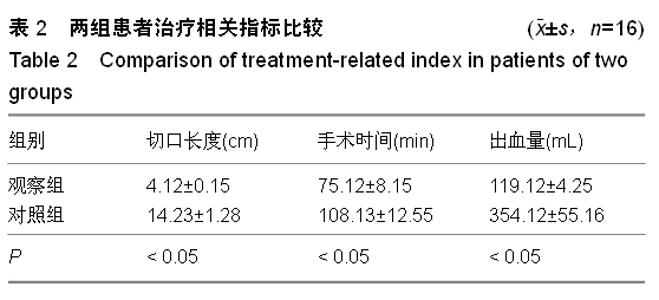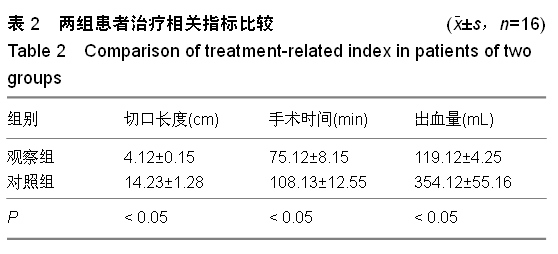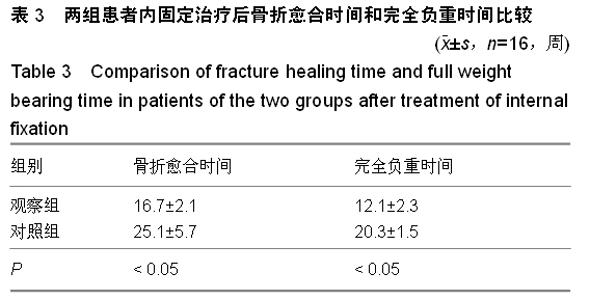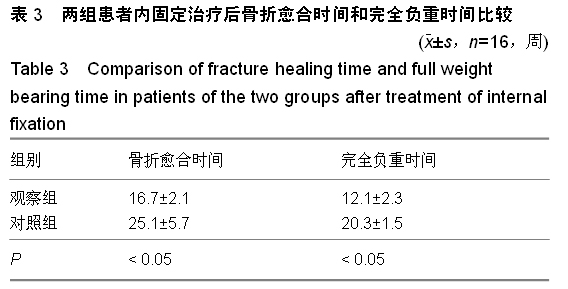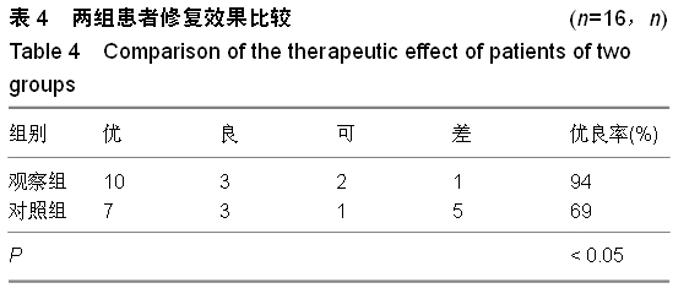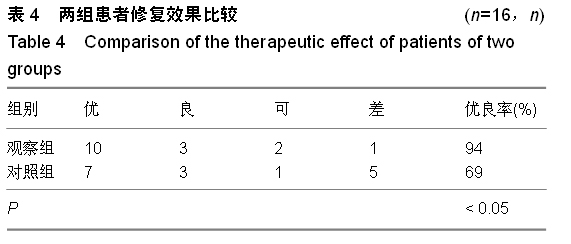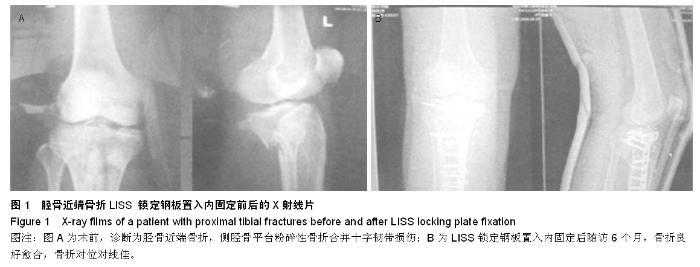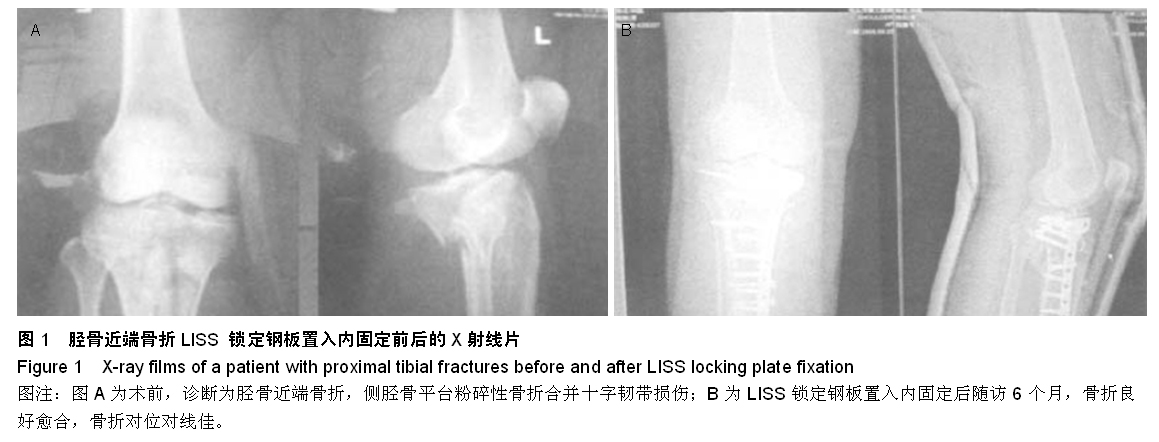| [1] 周次生.微创内固定系统治疗复杂胫骨近端关节内骨折的疗效分析[J].中国医药指南,2013,11(15):260-261.
[2] 王琨,刘宏泽,杨文国,等.微创内固定系统与锁定加压接骨板治疗胫骨近端骨折的对比研究[J].中国骨与关节外科,2010,3(2): 152-155.
[3] 杨超.胫骨近端关节内骨折不同植入物内固定的比较[J].中国组织工程研究,2013,17(48):8407-8412.
[4] 史翀.锁定加压钢板治疗胫骨平台骨折[J].河北医药,2012,34(7): 1053-1054.
[5] Weimann A,Heinkele T,Herbort M,et al.Minimally invasive reconstruction of lateral tibial plateau fractures using the jail technique:abiomechanical study.BMC Musculoskelet Disord. 2013;14(1):120-125.
[6] 龙术民.不同手术方法治疗胫骨平台骨折的临床疗效比较[J].实用临床医药杂志,2014,18(7):71-72,78.
[7] 孙晓曙,廖新,黄振健,等.解剖钢板手术治疗胫骨平台骨折的体会[J].吉林医学,2011,32(12):2409.
[8] 杨自权,张晨.胫骨近端关节内骨折治疗方案的选择[J].中国骨伤, 2013,26(9):709-713
[9] 张相恒.关节镜监视下复位内固定术治疗胫骨平台骨折42例[J].实用临床医药杂志,2014,18(15):84-85,91.
[10] 潘华,何大川.外固定支架结合胫骨近端锁定钢板治疗胫骨平台骨折的疗效[J].中国老年学杂志,2011,31(12):2336-2337.
[11] Yoo BJ,Beingessner DM,Barei DP.Stabilization of the posteromedial fragment in bicondylar tibial plateau fractures:a meehanicat comparison of locking and nonlocking single and dual plating methods.J Trauma. 2010;69(1):148-155.
[12] 雷明莉.锁定加压接骨板治疗胫骨平台骨折的护理体会[J].中国实用医 药,2010,5(16):212-213.
[13] 呼明武.胫骨平台骨折手术治疗分析[J].河北医药,2011,33(21): 3300.
[14] 石宇雄,何德利,陈潮锋,等.玻璃酸钠关节腔内注射对胫骨平台骨折术后膝关节功能影响研究[J].实用医学杂志,2013,29(22): 3753-3755.
[15] 陈文军.鹿瓜多肽联合经皮空心螺钉内固定治疗老年胫骨平台骨折的疗效[J].中国老年学杂志,2013,33(19):4886-4887.
[16] 徐昕,云雄,邓迎生,等.双侧钢板加植骨治疗老年C型胫骨平台骨折患者疗效分析[J].重庆医学,2013,42(23):2742-2744.
[17] 马运宏.外侧锁定联合内侧支持钢板与双支持钢板内固定修复胫骨平台骨折的比较[J].中国组织工程研究,2014,18(35): 5616-5621.
[18] 李舰,蒋林,周忠,等.双侧钢板置入内固定治疗复杂胫骨平台骨折:同一机构6年17例随访[J].中国组织工程研究与临床康复,2011, 15(13):2458-2462.
[19] 王峰,曾政,王栋,等.鹿瓜多肽联合经皮空心螺钉内固定治疗胫骨平台骨折的临床研究[J].中国生化药物杂志,2012,33(4): 470-471.
[20] 冯晰旻,姜荃月,刘尊鹏,等.单、双侧钢板内固定术治疗复杂胫骨平台骨折疗效对比观察[J].山东医药,2012,52(10):43-44.
[21] 张振东,王维山,董金波,等.临床路径应用于关节镜下胫骨平台骨折治疗的变异分析[J].山东医药,2012,52(24):59-61.
[22] Chiu CH,Cheng CY,Tsai MC,et al.Arthroscopy-assisted reduction of posteromedial tibial plateau fractures with buttress plate and eannulated screw construct.Arthroscopy. 2013;29(8):1346-1354.
[23] 邱淳烈.全膝置换术在严重胫骨平台骨折及骨折后创伤性膝关节炎治疗中的应用[J].山东医药,2010,50(31):65-66.
[24] 冯刚,潘志军,李杭,等.双锁定钢板交叉支撑固定治疗累及后外侧的C3型胫骨平台骨折[J].中华骨科杂志,2014,34(7):695-702.
[25] 刘永刚,左立新,裴国献,等.胫骨平台骨折Schatzker分类数字化模型的建立及其在虚拟手术中的应用[J].中华医学杂志,2013, 93(31):2478-2482.
[26] 薛燚,张永良,王强,等.关节镜下治疗Ⅴ、Ⅵ型胫骨平台骨折并前交叉韧带撕脱骨折的疗效观察[J].山东医药,2013,53(17): 64-65,73.
[27] Prasad GT,Kumar TS,Kumar RK,et al.Functional outcome of Schatzker type V and VI tihial Dlateau fractures treated with duaI plates. Indian J Orthop. 2013;47(2):188-194.
[28] 李锐,何利民.LISS接骨板治疗股骨远端和胫骨近端复杂骨折的疗效分析[J].中国社区医师(医学专业),2012,14(10):117-118.
[29] Heikkila JT,Kukkonen J,AhoAJ,et al.Bioactive glassgranules:a suitable bone substitute material in the operative treatment of depressed lateral tibial plateau fractures:8 prospective, randomized 1year follow-up study. J Mater Sci Mater Med. 2011;22(4):1073-1080.
[30] 崔硬铁.胫骨平台骨折的诊疗进展[J].中国骨与关节外科,2012, 5(3):268-273,242.
[31] 李世芳,孙健,周道政,等.双切口双钢板及锁定钢板内固定修复胫骨平台骨折的稳定性比较[J].中国组织工程研究,2014,18(26): 4179-4184.
[32] 曹阳,袁子明,闫鹏,等.纳米人工骨植骨材料治疗胫骨平台骨折的特点[J].中国组织工程研究与临床康复,2011,15(38): 7189- 7192.
[33] 王言青,田学忠,贾世孔,等.POLYAX多轴锁定钢板内固定术治疗复杂胫骨平台骨折疗效观察[J].山东医药,2011,51(10):61-62.
[34] 王奉雷,张旭强,尚宪平,等.锁定钢板与双切口双钢板内固定治疗复杂胫骨平台骨折的临床疗效对比分析[J].现代预防医学,2011, 38(19):4057-4058.
[35] 夏太宝,杨惠林,朱晓宇,等.解剖钢板和Liss钢板置入治疗复杂性胫骨平台骨折的疗效比较[J].中国组织工程研究与临床康复, 2009,13(43):8461-8464.
|


